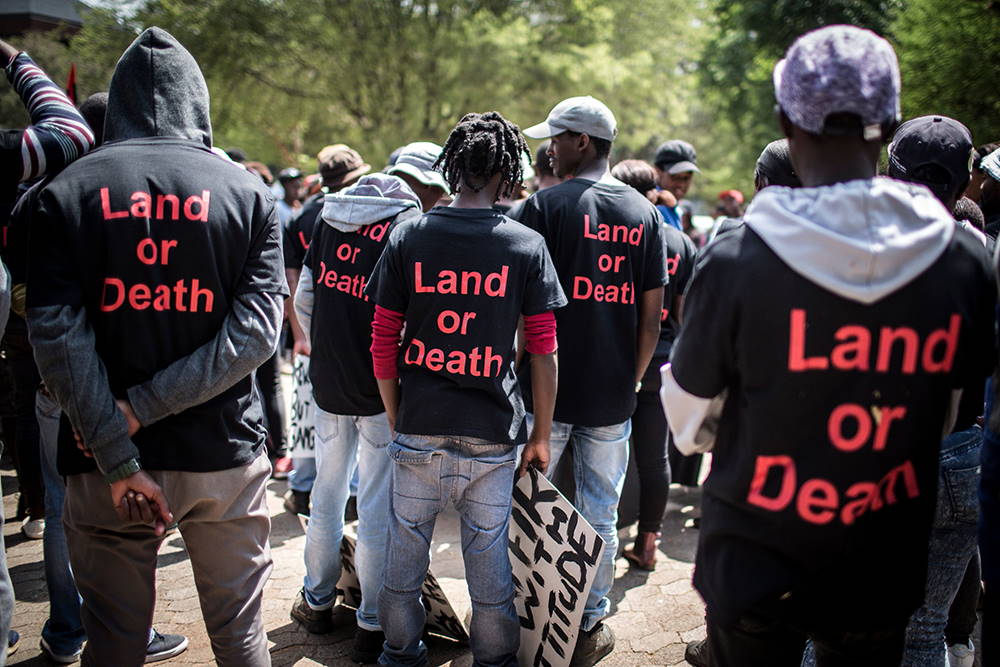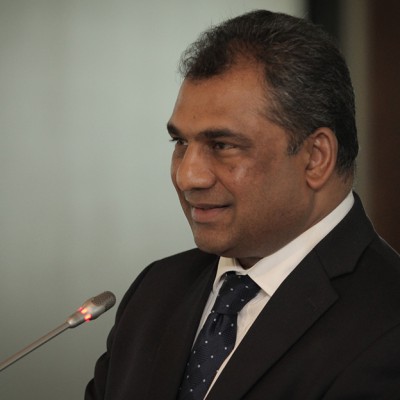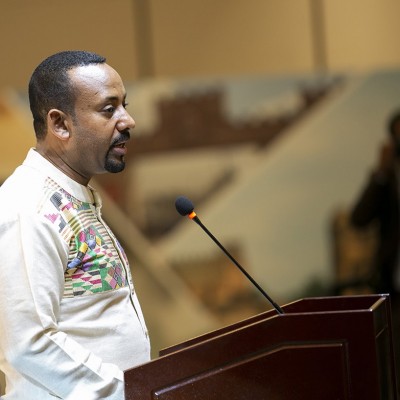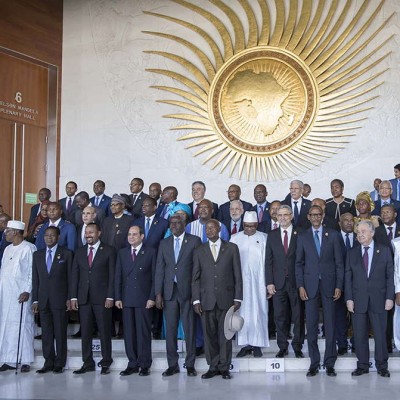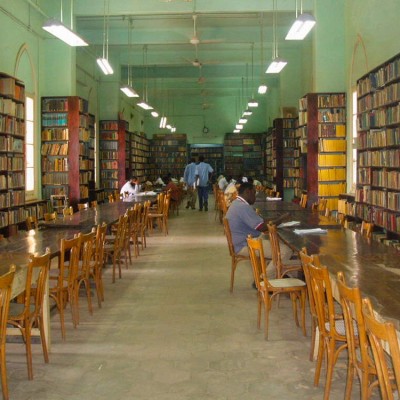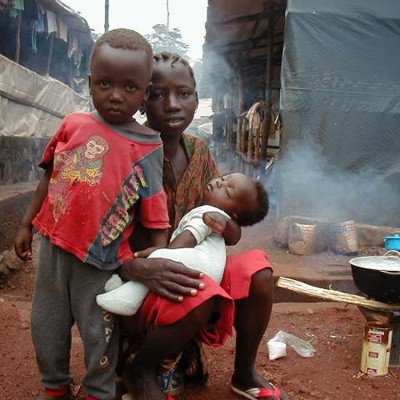Introduction
From Biblical times, wars have been fought – and are still being fought – over land and territory. This is precisely because land is one of the most important resources for the sustenance of life, human security and prosperity. In South Africa, the land question – given its tortuous history – is a particularly emotive issue which, if not addressed with the urgency and sensitivity it deserves, could lead to an implosion of the country. In an endeavour to avoid the costs, discomfort and uncertainties of violent land conflict, this article proposes strategies for preventing it and achieving food security – the foundation of civilization and the first line of defence for both human and state security.
The land question is examined from a holistic perspective, and a win-win solution is recommended. A holistic approach entails locating land reform within the broader framework of sustainable development, while a win-win solution means parties to the conflict have to compromise and learn to live together peacefully. Reconciling the divergent interests of key stakeholders requires a delicate balance between the quest for justice and the need for peace – both desirable but often incompatible goals. This article concludes by stressing the importance of revolutionising agriculture and harnessing science and technology to ensure food security in a challenging environment.

Land, Power and Wealth in South Africa
The colonial state, as in much of Africa, played a central role in the land dispossession of indigenous blacks and their subsequent proletarianisation. At the behest of the emergent capitalist class, which wanted cheap labour, the colonial state used extra-economic measures and legislation to dispossess blacks of their land and force them into wage labour in mines and factories. Before colonialism, blacks owned almost all the land in South Africa, but after the Native Land Act of 1913, which reserved about 85% of the land for whites, blacks owned a mere 13% of the land.1 As Du Plessis2 notes, “By the time of the advent of the new South Africa, about 17 000 statutory measures had been issued to segregate and control land division, with 14 different land control systems…” Land dispossession led to racial, economic and political power imbalances, which persist more than two decades after the first democratic elections.
Not surprisingly, many people are so angry that they want back lost black land at any cost. While this sentiment is understandable, the article stresses that, since the costs of conflict over land could easily far outweigh the benefits, endeavours at redressing the historical injustices of the past should seek to achieve a win-win outcome.
Options and their Consequences in a Conflict Situation
In any conflict situation, there are broadly three possible scenarios: flight, fight and compromise. In both the first and second scenarios, one of the parties to the conflict wins and the other loses, and so it is a win/lose or lose/win – or, even worse, a lose/lose – outcome. Only the last option, of compromise – give and take – can lead to a win/win outcome.3 The first and second options of flight or fight are problematic in many ways.
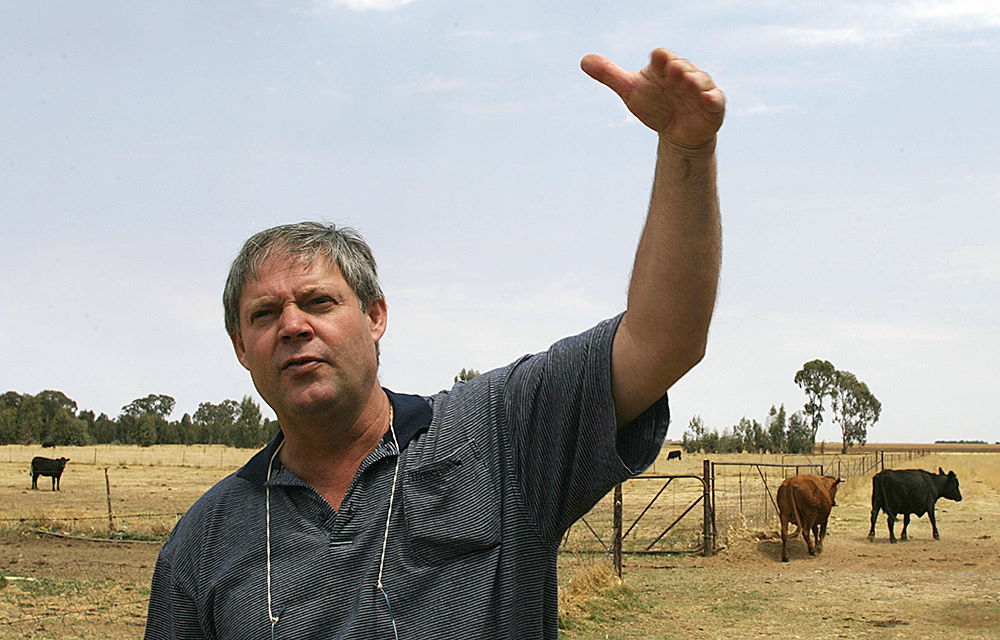
Flight
Flight is frustrating in many respects. In the context of the land question in South Africa, flight would mean white farmers fleeing – for example, to countries such as Australia, New Zealand and the United Kingdom, among others. First, such flight denudes the country of needed expertise and resources. Second, things could be worse in the host country where one flees to, as migrants are often subjected to hostility by local communities. Alternatively, flight would mean the government not taking action to address the land question directly. This is an untenable development, which may force the landless to take matters into their hands and invade white farms.
Fight
When one fights, one either loses or wins, or there is a stalemate. When one loses – as amply demonstrated by numerous cases of the defeated in history – one’s destiny will be at the mercy of the victor, for “might is right”. While the allure of victory drives many to fight, cases of complete victories are rare. More often than not, the victory has been a Pyrrhic victory – that is, victory won at too high a cost; “losing 11 to get seven” as it were. In any case, victory tends to lead to a negative peace or “peace of the graveyard”, which is not sustainable, for it is based on fear and mistrust between the victor and the defeated.
With regard to the land question in South Africa, the fight option would mean redistributing land without compensation. Were this to happen, the chances are white farmers will fight back, possibly using any means possible, and most probably supported by the West. Violent conflict or sanctions would place a huge burden on the country’s struggling economy. The point is, a confrontational approach to the land question, whether right or wrong, may have grave unintended socio-economic and political consequences.
A Win-win Outcome
A win-win outcome is a situation in which the major protagonists in a conflict recognise the futility of fighting and the impossibility of total victory, and therefore agree to a mutually beneficial outcome based on compromise – that is, give and take. For a win-win solution to materialise, the major protagonists should be willing to negotiate, compromise and even empathise with their enemy. In other words, the win-win theory of conflict resolution is predicated on enlightened and rational self-interest, and is based on pragmatism rather than ideology.

A compromise resolution of the land question entails sharing the land with white farmers, instead of evicting them. The obvious benefits of this approach are many, including avoiding the disruption of food production, promoting racial reconciliation, and new black farmers perhaps learning a few tricks of the trade from established white farmers. If the idea of sharing and living together is accepted, then the next big question is: how?
Optimal Farm Size
To efficiently distribute land without disrupting production, farms should not be taken over, but instead should be downsized to an optimal farm size, which the established farmers can keep. Land over and above the optimal farm size should be redistributed without compensation. Establishing the optimal farm size should be evidence-based and should consider all factors, including the country’s socio-economic and political situation, population density, population growth, rate of economic development, climate change, rural-urban migration, and the imperatives of food security. It should be emphasised that guaranteeing food security is not so much about how many people own farms as it is about how productively the farms are used. For example, in the United States, “farmers and ranchers make up just 1.3 per cent of the employed population” and “one farm feeds 166 people annually in the US and abroad”.4 In fact, making agriculture the backbone of the economy could lead to eternal financial and technological dependency, balance of payments deficits and increasing indebtedness.
New Farmer Selection Criteria
With a relatively high population density of 48 people per square kilometre and a population growth rate of 1.2% per annum,5 there is simply not enough farmland for everyone who wants it. Giving land to the landless poor may be a popular thing to do. However, without skills, adequate inputs and passion for farming, this could lead to food shortages, desertification, poaching and, ultimately, political instability. The point is, “farming is not easy, it’s not a walk in the park… Even if you have a master’s degree in agriculture, you need to learn the practicalities of farming.”6
As the director of the Future Farmers SA Foundation notes: “Waking up at 4am to milk and clean is not easy” – and, in fact, “some apprentices give up”.7 Therefore, commercial land should be allocated not to everyone who wants it, but instead to those with a demonstrable potential to productively use it, feed the nation and ensure food security. The landless could be allocated small plots for subsistence farming.

Land Ownership System
The nature of the land ownership system influences productivity and access to bank loans. Will the new farmer have leases and/or title deeds, which could be used as collateral in accessing bank loans? Should the farms be run as cooperatives instead? Or should they be run by agricultural training colleges as state farms? What is the case for gender equity in land ownership? Do women make better farmers? What should be prioritised: food crop or cash crop farming or animal breeding? Satisfactory answers to these questions can only be developed within the broader framework of a holistic and scientific-based land reform programme that aims to achieve food security.
Towards a Holistic Approach
A holistic approach to land reform should take into account the multiple challenges facing the country, and which have a direct bearing on land reform. Among others, these include population explosion, youth dislike of agriculture, climate change and, more recently, the COVID-19 pandemic.
Population Explosion
Malthus’s theory of exponential population growth and arithmetic food supply8 was severely criticised by many. In Africa, notwithstanding the critics, the evidence of Malthus’s core argument is glaring: not only is the population growing faster than food production capacity, but urban areas are also increasingly getting congested and polluted. Rapid population growth stretches the budget for social welfare, education and healthcare and increases unemployment, crime, violence, the demand for land and resource wars. It also intensifies the conflict between man and wildlife, as human settlement increasingly encroaches on their natural habit, leaving them with nowhere to go and threatening them with extinction – which, in turn, causes tremendous ecological disequilibrium. In a nutshell, rapid population growth, in the context of diminishing output from overused and degraded land, is a recipe for political explosion. To avert this, policies should aim at managing and reducing population growth.
Youth and Agriculture
Youth (aged 18–34) “constitute almost a third… of the population”9 and, as suggested by their rapid rural-urban migration, are not as interested in farming as in city life. The case of a newly resettled farmer in Zimbabwe, Laiza, whose sons “all moved to the capital to eke out a living as street vendors”, amply demonstrates the fact that “youth see no future for themselves in the troubled sector”.10 Laiza further states: “My sons won’t hear anything about farming. They would rather be in the city even though life is also tough for them there.”11
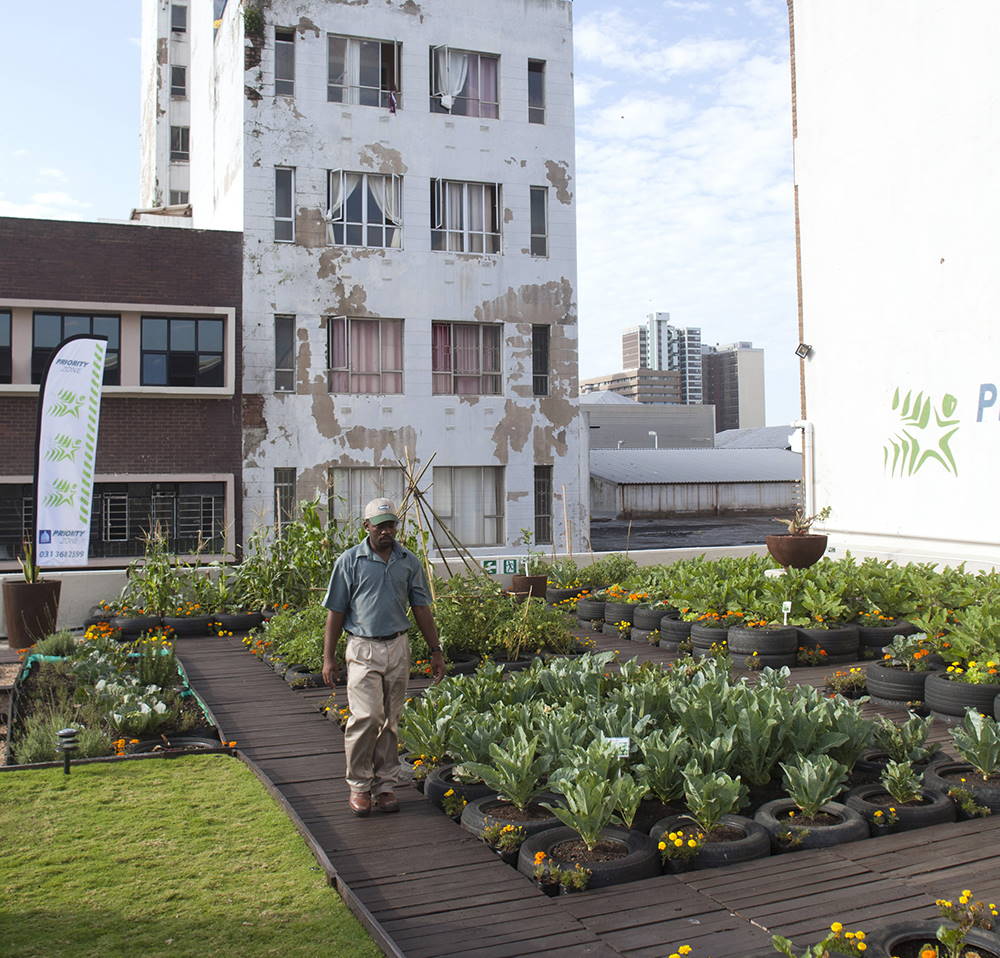
If youth, the future (leaders) of the world, are not as interested in agriculture as in city life, it is necessary to rethink our priorities and focus on industrialisation and building smart cities instead of celebrating agriculture as the backbone of the economy.
Climate Change and its Impact
Climate change and global warming are contributing to land degradation, rendering vast amounts of land useless, rising rural-urban and international migration, food insecurity, crime and violent conflict. The effects of climate change are compounded by the current system of food production and our eating habits, which are not sustainable, and which are reducing the land’s capacity to sustain life. For example, agriculture currently uses one third of all fresh water and contributes to about a quarter of all greenhouse gases emissions, and “of all the greenhouse gases, two very deadly ones come from animal agriculture – nitrous oxide and methane.”12 When cows burp, as part of their digestion and rumination, they produce methane.
COVID-19 Impacts and Implications
The COVID-19 pandemic has negatively affected food production, distribution and food security, especially in poorly governed states. The lockdown restrictions implemented by countries have disrupted the food supply chain, resulting in situations where farmers are losing millions of dollars from wasted food crops that cannot be delivered to market, while many more urbanites starve because they cannot access food.
COVID-19 has amplified the effects of climate change and exposed weaknesses in the global food supply chain in general, and the vulnerabilities of city dwellers in particular. The vital lesson from this experience is that food should be produced as near as possible to the final consumer.
Revolutionising Agriculture to Achieve Food Security
To produce enough food to feed everyone while saving the planet, keeping the climate cool and limiting the spread of COVID-19, agriculture needs to be revolutionised. Specifically, farming methods need to be adjusted to the harsh realities of the new times. Agriculture could be revolutionised by, among others, new ways of farming, new types of farms, hybridisation and genetically modified foods (GMF), and changing eating habits.
New Ways of Farming
New ways of farming could involve transitioning from chemicals-based farming to organic farming, from ploughing to zero tillage, and from meat farming to cricket farming, as in China. Such new ways of farming would increase food production and food sources – which, in turn, would reduce the pressure for land redistribution.
New Farm Types
Food security could also be enhanced by building new smart cities – that is, cities with new types of farms, such as houses that have vegetable gardens on rooftops, balconies and in indoor spaces; and high-rise carpark-style farms that harvest water from the top floor to water crops on all the other floors.
Food can be produced on the consumer’s doorstep or indoors through the introduction of vertical farms, for example. Vertical farms, which have been introduced in urban areas in Sweden, involve growing crops on house and building walls. According to Aljazeera News, “Without the risk business of growing out in nature, the plants don’t need pesticides hence can be consumed raw, straight off the wall… They taste better than the average supermarket salad.” Vertical farming could get food within yards of consumers’ doors and within reach when it is most needed,13 such as during pandemic lockdown restrictions.
Smart Cities
Building smart cities involves using empty spaces in cities for food production as well as introduction of high-rise “storey farms”, indoor crops and rooftop gardens. Building smart cities across the country will enhance food security, and transform urbanites from passive consumers into active producers and thus reduce crime. As people move from squatter camps and shanty towns to new planned smart cities, service delivery, population management and census should improve too.
In addition, efficient land use will help better absorption of carbon dioxide. The global movement in urban farming should therefore be supported – for instance, through urban council by-laws permitting, managing and taxing it, as well as by harnessing advances in science and technology.
Hybridisation and Genetically Modified Foods
Advances in hybridisation science and GMF should enable the production of drought-resistant and bigger grain crops in a shorter period. Bigger and early maturing crops would ameliorate the effects of an unjust land ownership system, as smallholders would be able to produce more from small pieces of land. Diversification of food sources, as well as the introduction of drought- and flood-resistant crops and crops that ripen faster, are essential to food security. Research and innovation would not only create employment, but would also reduce the pressure for rapid land reform and limit the “tragedies of the commons”, manifested in the overuse, deforestation and degradation of communally owned land and resources.
Changing Eating Habits
Eating habits ought to change and be aligned with the demands of climate change, COVID-19 and ailing economies. Since meat production in general, and beef production in particular, is more harmful to the environment than vegetable farming,14 there might be a need to move from a meat-based diet to a plant-based diet. For example, Impossible Foods Company is leading the way in plant-based products.15 We must avoid wasteful consumption.
Conclusion
To summarise, in considering the land challenge question and its many dimensions in South Africa, it is important to adopt a holistic approach that locates the land question within the broader framework of sustainable development. This means reconciling different interests, building synergies between various policies being pursued by different government departments, and harnessing advances in science and technology. In a nutshell, to produce enough food to feed everyone while saving the planet and keeping the climate cool, land should be allocated to competent farmers and agriculture should be revolutionised.
An effective and efficient land reform programme should seek to achieve a win-win outcome within the context of sustainable development. This is necessary to avoid the disruption of farming and the risks associated with a win-lose or lose-lose outcome. The costs of either land conflict or inaction are enormous, and therefore both should be avoided through a win-win solution framed within a holistic development discourse. As discussed, our best hope for achieving food security in a challenging environment rests in science, technology and innovation.
Endnotes
- Levy, Ariel (2019) Who Owns South Africa? The New Yorker, Available at: <https://www.newyorker.com/magazine/2019/05/13/who-owns-south-africa> [Accessed 17 September 2020].
- Du Plessis, Willemien J. (2011) African Indigenous Land Rights in a Private Ownership Paradigm. Potchefstroom Electronic Law Journal, 14 (7), pp. 44–69.
- Spangler, Brad (2013) ‘Win-win/Win-lose/Lose-lose Situations’, Beyond Intractability, Available at: <https://www.beyondintractability.org/essay/win-lose> [Accessed 7 December 2019].
- American Farm Bureau (2019) ‘Fast Facts About Agriculture & Food’, Available at: <https://www.fb.org>newsroom> [Accessed 7 December 2019].
- Macrotrends (2019) ‘South Africa Population Growth Rate, 1950-2019’, Available at: <https://www.macrotrends.net/countries/ZAF/south-africa/population-growth-rate> [Accessed 7 December 2019].
- BBC World News (2020), In Business Africa, London [Broadcast on 16 March 2020].
- Ibid.
- Malthus, Thomas (1798) An Essay on the Principle of Population, Volume 1, Available at: <https://books.google.co.za/books/about/An_Essay_on_the_Principle_of_Population.html?id=FL4Vi1F1x9cC&redir_esc=y> [Accessed 26 November 2019].
- Statistics South Africa (2019) ‘South Africa’s Population Reaches 58.8 Million’, Available at: <http://www.statssa.gov.za/?p=12362> [Accessed 17 September 2020].
- Majoni, Tawanda (2017) ‘Agriculture a Hard Sell for Zimbabwe’s Youth’, The New Humanitarian, Available at: <https://www.thenewhumanitarian.org/analysis/2017/12/27/agriculture-hard-sell-zimbabwe-s-youth> [Accessed 18 November 2019].
- Ibid.
- Gray, Charlie (2019) ‘How much do Cows Really Hasten Climate Change’, City Watch, Available at: <https://www.citywatchla.com/index.php/be-green/18803-how-much-do-cows-really-hasten-climate-change> [Accessed on 17 September 2020].
- Aljazeera (2020) News, Doha [Broadcast on 6 July 2020].
- Gray, Charlie (2019) op. cit.
- Aljazeera (2019), Planet SOS, Aljazeera, Doha [Broadcast on 1 December 2019].

